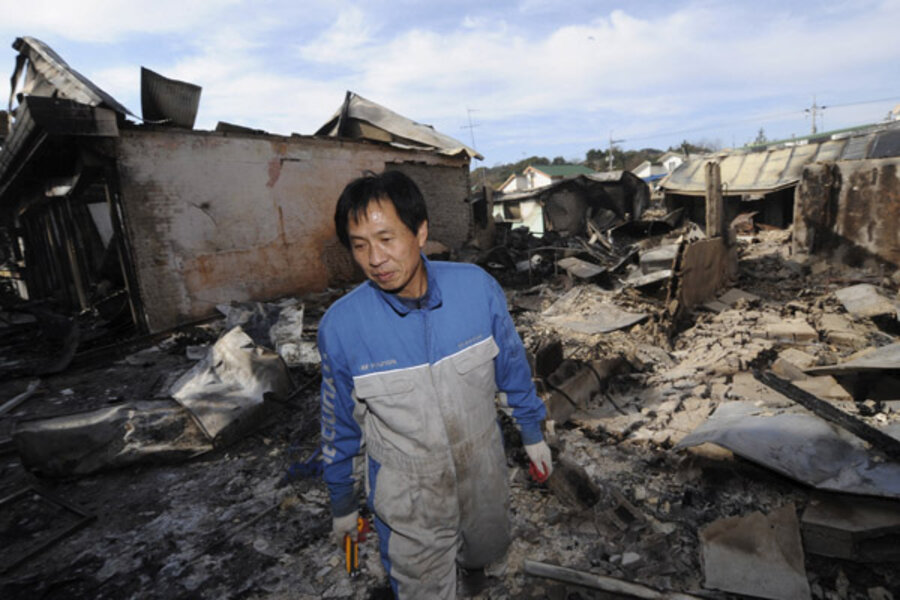Yeonpyeong attack spoils South Korea's appetite for sending food aid to North Korea
Loading...
| Seoul, South Korea
As South Korean and US military leaders meet this week to discuss North Korea’s Nov. 23 attack on Yeongpyeong Island, South Korean aid groups are scrambling to assist those most affected by tensions on the peninsula: North Korea’s hungry.
Public opinion on giving aid to the North has shifted dramatically in the South since the incident, which killed two soldiers and two civilians. This has forced aid groups here to significantly rethink their strategies for supporting North Koreans.
After the Yeonpyeong attack, 57 percent of South Koreans surveyed were in favor of cutting aid to North Korea, according to a study released this week by the East Asia Institute, an independent think tank based in Seoul. That number was just 32 percent in January, and 51 percent after the sinking of South Korea's Cheonan warship in March. An international investigation team found that a North Korean torpedo was responsible for the Cheonan sinking, though North Korea has maintained its innocence in the matter.
IN PICTURES - Cult of Personality: Inside North Korea
“Before the Yeonpyeong incident, there was some thought in the South that if the North were willing to agree to a system of frequent reunions of separated families, the South would consider a kind of quid pro quo where food aid would be supplied,” says Edward Reed, the Asia Foundation’s country representative in Korea. “For South Korea, it would now be politically impossible to give any substantial aid to North Korea.”
South Korea a top food supplier to the North
For many years, South Korea was a major supplier of food to North Korea. That aid has more or less ended under the conservative administration of President Lee Myung-bak administration, although Mr. Lee had appeared open to discussing the resumption of food aid this fall.
After severe floods in the North this summer, Lee agreed to send 5,000 tons of rice and 3 million cups of instant noodles to the North, along with 10,000 tons of cement.
But less than a month later, that aid was suspended due to North Korea’s attack on Yeonpyeong.
South Korean NGOs and international aid groups operating in the South need government approval before sending aid to the North. While the government allowed one organization to send 203 tons of rice to the North in September, it looks unlikely that Lee would allow more organizations to send aid in the near future.
Shifting aid strategies
The Korean Sharing Movement, an aid and advocacy organization based in Seoul, used to provide aid to North Korea, but shifted its focus to medical and agriculture training programs after Lee took office.
Now, like other NGOs here, they’re having trouble doing even that work.
South Korea's government has now cut the line of communication between South Korean nonprofit organizations and their offices in the North, leaving organizations like the Korean Sharing Movement only able to contact their North Korean counterparts when they visit China.
“We really regret what happened in the Yeonpyeong incident, but we believe that cooperation between the two Koreas is essential to peace,” says Yi Yeh-jung, project director at the Korean Sharing Movement.
Ms. Yi says that, given the climate here, her organization has once again changed their focus to advocacy. While it’s an uphill battle, Ms. Yi says she’s hopeful that South Koreans will come around on the aid issue.
“One of our biggest challenges at this time is to get support for our work from the public. But I hope that two or three months after this incident, the public sentiment toward North Korea will change again.”





